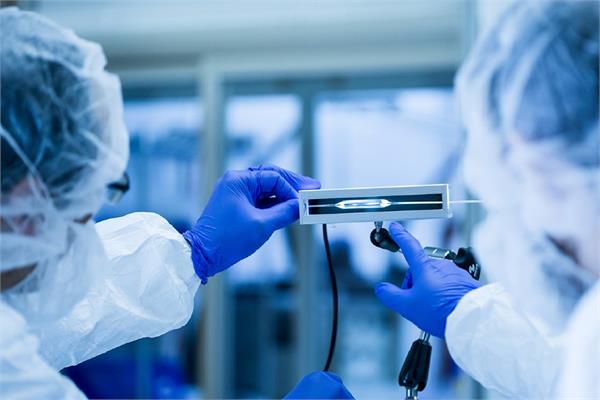
Fraunhofer researchers are developing an automated coating machine to better treat coronary heart diseases.
Researchers from Fraunhofer IPK are developing an automated process to coat balloon catheters with immunosuppressors and cytostatic drugs, in order to replace the invasive stent procedure for coronary heart diseases.
Coronary heart diseases are serious medical conditions caused by calcium deposits that constrict the coronary arteries. Doctors usually employ a stent – a balloon catheter with a plastic support – to widen the constricted pathways and allow the blood to flow unrestricted. However, over the course of a few months, the tissue around the stent can grow back into the blood vessel, leading to further constriction called restenosis.
For this reason, doctors are starting to consider an alternative procedure: a balloon catheter coated with immunosuppressors and cytostatic drugs that expands itself, causing the vessel to dilate mechanically. The active substances, that are conveyed via the surface of the balloon directly onto and into the artery walls, can inhibit restenosis, preventing the vessel from closing back up.
Automated coating machine to speed up the process and avoid errors
The coating of the catheters with drugs is often applied manually by skilled workers in a time-consuming and error prone process. However, the project “Heliko – Automated and process-safe coating of balloon catheters with active substances”, funded by the German Federal Ministry of Education and Research (BMBF), is developing an automated coating machine prototype.
The microscopic crystals of the medication should point outward in the same direction for the active substance to penetrate the cell walls quickly and effectively, so the thickness of the coating and the composition of the coating surface play two fundamental roles. At the same time, the desired structure of the crystals results in the medication having a prolonged effect in the artery wall. Once the drug has been released, the balloon catheter is deflated and then removed.
“The balloon catheters must convey the medication immediately into the artery wall. This process must not take any longer than one minute in order to keep the heart’s supply of oxygen from being interrupted for too much time. For this reason, the surface may not be too smooth: a vectored conformation of the crystals ensures more optimal transfer of the active substance,” stated Gregor Dürre, researcher at Fraunhofer IPK.
Several factors – such as kinematics, amount of pressure applied, coating speed, coating duration and speed of rotation – impact the crystal structure and the construction of the automatic coating machine.
“The catheter balloon is a fragile and exceptionally thin membrane that needs to be coated in its expanded state. That is incredibly difficult. The slightest of mistakes can lead to tears in the membranes that are only 20–80 micrometres thick,” commented Annika Brehmer, biotechnology specialist.
In order to achieve the desired conformation for the crystallization of the solution on the balloon membrane, the crystallization conditions must be precisely controlled during the coating process: two motors rotate the filament on which the balloon is stretched to ensure that it is evenly coated. The coating process then takes place in sequential fashion with the balloon rotating and the coating head simultaneously being shifted from one strip to another. An integrated, high-resolution optical surface measurement device takes over for the quality control by constantly measuring the coating thickness.
The coating procedure typically takes between three to five minutes and the throughput results increased in comparison to the manual procedure, as well as the process safety and the quality control
with the measuring device.
Researchers are currently working on optimising the prototype, the automated coating machine is expected to be launched in early 2023.